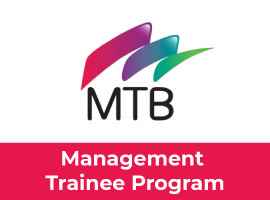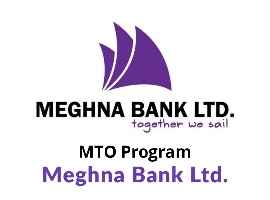The history of private commercial banking in Bangladesh is a dynamic one, marked by periods of nationalization and subsequent liberalization. Its evolution can be understood by examining key phases:
1. Pre-Independence (Before 1971):
• British Era (1757-1947): Banking in the region dates back to the British period. Early institutions like the Dhaka Bank (1806) and Bengal Bank (1784) emerged, with Bengal Bank opening branches in what is now Bangladesh. By 1947, six branches of Bengal Bank operated in the territory.2 Banking facilities during this time were primarily under private ownership.
• Pakistani Period (1947-1971): After the Partition of British India, East Pakistan (now Bangladesh) inherited a banking system largely dominated by West Pakistani-owned banks. While some local banks like Eastern Mercantile Bank Ltd. (now Pubali Bank Ltd.) and Eastern Banking Corporation Ltd. (now Uttara Bank Ltd.) were established by Bengali businessmen, they had limited access to credit compared to their West Pakistani counterparts. By 1971, most of the 36 scheduled commercial banks operating in the entire country were Pakistani-owned.
2. Post-Independence and Nationalization (1972-Early 1980s):
• Following Bangladesh's independence in 1971, the government, under Presidential Order No. 127 of 1972, nationalized almost all private banks, merging them into six nationalized commercial banks (NCBs).3 This policy aimed to ensure social control and direct resources towards national development goals.
• The State Bank of Pakistan's Dhaka branch was reorganized as the Bangladesh Bank, the central bank of the newly independent nation.
• However, this nationalization faced challenges, including politically biased banking systems and issues with management, which often led to weak asset quality and inadequate provisioning in state-owned banks.
3. Denationalization and the Rise of Private Banks (Mid-1980s Onwards):
• Early Denationalization (1984-1989): Recognizing the shortcomings of a fully nationalized banking system, a pattern of denationalization began in 1984.6 Pubali Bank Ltd. and Uttara Bank Ltd. were among the first to be transferred back to the private sector in 1985, followed by Rupali Bank in 1986.
• Establishment of New Private Banks: The government actively encouraged the establishment of private sector banks to foster competition, improve service quality, and increase the availability of finance for entrepreneurs and businesses.
o AB Bank PLC. (formerly Arab Bangladesh Bank) was incorporated on December 31, 1981, and began operations in April 1982, becoming the first private sector bank in Bangladesh.
o National Bank Limited was established in 1983.
o Other significant private banks that received licenses in the early to mid-1980s include Islami Bank Bangladesh (1983), United Commercial Bank (1983), City Bank (1983), and Al-Baraka Bank (1987).
• Financial Liberalization (1990s and Beyond): The early 1990s saw more comprehensive financial sector reforms, often with support from the World Bank. These reforms aimed to enhance competitiveness, deregulate interest rates, improve debt recovery, and strengthen the regulatory and supervisory framework. Many private commercial banks were granted licenses during this period.
• Growth and Dominance: Over the years, private commercial banks have expanded significantly, both in terms of branch networks and market share.10 They have become dominant players in the banking sector, constituting a substantial portion of industry assets and deposits, while the share of nationalized banks has declined.
• Introduction of Specialized Banking: The private sector also saw the emergence of specialized banks, including Islamic Shariah-based banks (like Islamic Bank Bangladesh Ltd.11 from 1983), which offered financial services adhering to Islamic principles.
• Modernization and Digitalization: In recent decades, private banks have been at the forefront of adopting modern banking practices and technologies, including internet banking, SMS banking, ATMs, and other e-products, contributing to increased financial inclusion.
Today, Bangladesh's banking sector comprises a mix of state-owned commercial banks (SOCBs), specialized banks (SDBs), foreign commercial banks (FCBs), and a significant number of private commercial banks (PCBs), including both conventional and Islamic Shariah-based institutions.12 The private sector banks continue to play a crucial role in the country's economic development, though challenges such as non-performing loans and the need for ongoing reforms remain.13 The Bangladesh Bank continues to implement policies, including recent merger policies and dividend payout regulations, to ensure a robust and stable financial system.
Banking is very popular profession in Bangladesh. Selection process, remuneration and working environment all the aspects of the job attract a lot of fresh graduates in this profession.
Private Banks hire two category of employee; fresh graduates and experienced bankers or lateral entrants.
A reputed private commercial Bank is looking for professionals in different fields or area.
State Bank of India is looking for fresh gradute in the folloing position:
Job Title: Senior Executive
Required Qualification: Masters or 4- year Bachelor
Experience: This will be aan added advantage.
Application Deadline: January 02, 2025
For job description and application CLICK HERE
Al Arafa Islami Bank is looking for Legal Officer
Job Grade: Legal Officer(Executive Officer-Assistant Vice Presiedent)
Total Experience: 05-12 Years
Academic Qualification: LLM
Application Deadline: October 30, 2025
For job description and application CLICK HERE
Please send your resume along with a detailed CV to
Head Office, Al-Arafah Tower, 63, Purana Paltan, Dhaka-1000.
Job Title: Trade & Remittance Operations(SO-FAVP)
Total Experience: At least 05 Years
Application Deadline: October 24, 2025
For job description and application CLICK HERE
Job Title: Special Asset Management Division-Associate Officer to Assistant Vice President
Application Deadline: June 15, 2025
For application & job description CLICK HERE
Job Title: Islamic Banking Operations FAVP to AVP
Application Deadline: June 10, 2025
For application & job description CLICK HERE
Job Title: Islamic Banking Operations Officer to SPO
Application Deadline: June 10, 2025
For application & job description CLICK HERE
Job Title: Officer-Learning & Development (JO to SPO)
Application Deadline: June 10, 2025
For application & job description CLICK HERE
Job Title: Legal Officer(Officer to PO)
Application Deadline: May 31, 2025
For application & job description CLICK HERE








